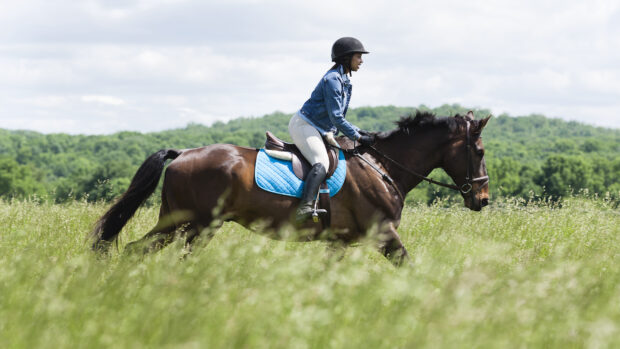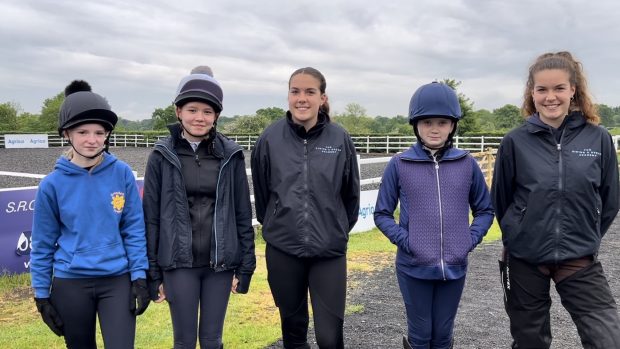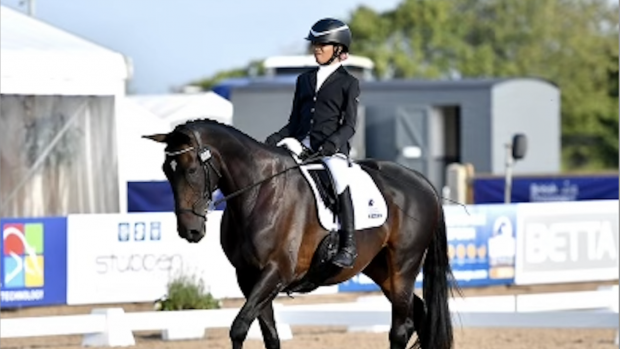We are all collectively responsible for making sure that the sport is making real progress – and not just “ticking boxes” when it comes to equality, diversity and inclusion (EDI).
That was the underpinning message that came from a panel debate on the subject at the Horseracing Industry Conference at Newbury racecourse on 30 June.
How success is measured, why representation matters, where to start when looking at gender imbalance among jockeys and what action people can take to make change happen headlined the discussion.
“When we’re discussing this topic, it can seem enormous. And actually, what every one of us really wants to know is, what can each of us do?” said diversity and inclusion steering group chairman Susannah Gill, director of communications and corporate affairs for the UK Tote Group.
She encouraged everyone to complete the new diversity and inclusion module on the “racing to learn” platform, and put what they learn into action, and encouraged organisations to sign up to the industry commitment.
“Don’t be a passive member of our industry and our society. If we don’t stand up for what we believe in, nothing’s going to change. So be a proactive advocate and not passive about these things,” she said.
Freedom Zampaladus, founder and chief executive of the Urban Equestrian Academy and member of British Equestrian’s equality engagement group, stressed the importance of representation.
“We need everyone to play their part to help make a change,” he said. “I think there’s something missing from EDI and that is R – R stands for representation. Representation is just as important as equality, inclusion and diversity. If there’s no representation, then it really could be seen as ticking boxes.
“What I mean by representation is someone like myself, who works at that level, every single day, lives the experiences every single day.”
Mr Zampaladus added that there is “a lot of fantastic work” being done in racing, which in his experience has led the way compared to the other equestrian disciplines.
He was not the only person to raise the point, and British Equestrian chief executive Jim Eyre responded, promising action.
“Rest assured on my watch things will change,” he said. “In other areas of diversity, we are very strong. But equally, I put my hand up and we will do whatever we can. We haven’t yet got a strategy for ethnic diversity, because we need to understand the data, we need to understand the baseline of where we’re at.”
He added that the next step is to have “tangible objectives and deliverables” rather than “box-ticking research”.
“In many areas I’ve heard [today], we will be much better together and stronger together if we speak with a single voice and approach these things collectively,” he said.
Naomi Lawson, director of communications at British Champions Series and Great British Racing, and co-founder of the Riding a Dream academy, continued Mr Zampaladus’ point about representation.
“If we wait for people to organically come up from racing, as it exists at the moment, into boardrooms, that’s going to take years and years,” she said, adding that racing has to be “much bolder” and look to action change at management level too.
She said the industry has lots of activity happening in this area, but what is lacking is an ethnicity strategy and to understand the lived experiences of people within the industry.
“What are the improvements we want to make? And what are the tangible actions we’re going to take which take us beyond commitment, and take us beyond elearning?” she said, adding that it is crucial to know these so the industry can look back and measure its progress.
She gave the example of how Riding a Dream, founded with the intention of increasing diversity and inclusion in British horseracing, is seeking to address this within the weighing room.
“Two percent of jockeys are from a diverse ethnic background; that doesn’t match up with 14% of the population across the UK,” she said.
“So what are the incremental steps that we’re going to take so that in 10 years’ time, 14% are from diverse ethnic backgrounds? That has to be part of the wider strategy work that is taking place, or is going to be taking place in the near future.”
You might also be interested in:

Progression key to improving diversity in equestrianism

British Equestrian to receive +£5 million to ‘level up’ access to horse sport

Subscribe to Horse & Hound magazine today – and enjoy unlimited website access all year round

‘London is boring by comparison’: milestone racing moment for teen who started at inner-city riding school
Horse & Hound magazine, out every Thursday, is packed with all the latest news and reports, as well as interviews, specials, nostalgia, vet and training advice. Find how you can enjoy the magazine delivered to your door every week, plus options to upgrade your subscription to access our online service that brings you breaking news and reports as well as other benefits.





